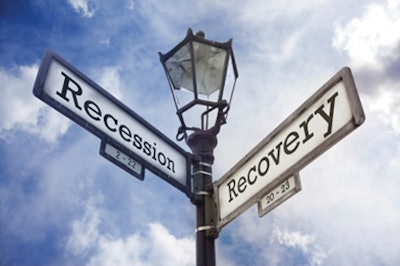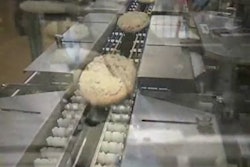A new year is almost here, and as the economy moves beyond deep recession, the outlook for 2011 is neither overtly pessimistic nor optimistic. Instead, there’s a sense of caution. That interpretation is based on more than 200 packaging professionals’ responses to a September e-mail survey of Healthcare Packaging readers.
About 22% of the 2011 Healthcare Packaging Trends Survey respondents were from pharmaceutical firms, 21% from medical device companies, 17% from packaging materials suppliers, 10% from packaging equipment vendors, and 8% from design and consulting firms, with respondent titles varying widely. The balance of respondents from the healthcare packaging community worked for personal care product makers, biologics/biopharmaceutical, and nutraceutical companies.
The goal of the survey was not to calculate percentages based on multiple-choice responses, but to seek verbatim responses to many of the key issues facing packagers in the pharmaceutical, medical device, biologics, and nutraceutical industries. What follows are several of the more thoughtful responses to the survey questions.
The economy, hiring, and firing
The survey asked, “How’s the economic outlook for 2011? Are you hiring? Planning more layoffs? Do you see a pickup or continued slowdown?”
“We are not laying off. At the same time, we are not hiring aggressively, either. We are seeing a pickup, and the projects are coming along well,” said a pharmaceutical respondent.
“The healthcare packaging division of our company is not adding new positions at this time. However, we are continuing to replace any vacated positions,” noted a respondent from a medical device manufacturer.
“We are making internal moves and attempting to maintain our employee base. We do not see a significant increase in sales that would warrant widespread hiring. However, we are selectively hiring as the ‘pool’ has increased in value versus skill level (i.e., we are able to hire good skill levels for a reasonable price),” according to a personal care products respondent.
“We are reducing cost and keeping a keen edge on our pricing,” noted a medical device respondent.
“The economic outlook seems good. As business increases, the possibility of hiring people can be explored,” said a respondent with a pharmaceutical company.
“Our company went through a 20-percent layoff in 2010, the first layoff in the history of the company. The company is starting to hire new employees, but the future growth is dependent on acquiring new compounds that can gain FDA approval,” explained a pharmaceutical company respondent.
“Right now the company is doing well, but that doesn’t mean that people are not worried for their jobs,” noted another respondent with a pharmaceutical firm.
“We are very hire-hesitant to avoid downsizing and keep labor costs low. When a position needs to be filled, we will hire if we don’t have the skill sets in-house,” said a representative of a pharmaceutical company.
“No hiring in the near future, and maybe more layoffs. Business has slowed down,” was the perspective of this medical device company respondent.
What’s your company’s top priority for 2011?
Not surprisingly, cost issues and sustainability ranked highest among survey respondents. Regulatory matters, packaging line efficiency, and multilingual labeling were also noted as pressing issues for 2011.
“Cost savings is a huge issue right now,” said a pharmaceutical respondent. “With the company really budget-crunching, they are looking to packaging to reduce costs as much as possible, and that burden falls directly on our department as packaging engineers.”
A respondent from a medical device firm said that “seeking financially viable sustainability initiatives, including going to PVC-free packaging,” was a corporate priority.
Other 2011 priorities mentioned by survey respondents included staffing personnel with “’A’ players that have the right skill sets,” challenges related to unique device identification, multilingual labeling that doesn’t compromise package validation, and issues related to small-volume runs.
The regulatory environment
”Describe your take on the current ‘revitalized’ FDA and regulatory environment as it relates to your packaging operations,” was another survey question. A large share of this question’s respondents came from the medical device arena, where one person believed the “FDA appears to have an adversarial stance again.”
Taking a more promising position was another medical device respondent who said, “Love it—much more cooperation that allows us to be prepared with the information wanted.” The respondent did add that the company encountered, “a bit more problems with filings required for items that used to be end-of-year changes.”
Not surprisingly, perhaps, a packaging vendor responded, “Increased regulatory scrutiny and activity actually drives business for a consulting firm like ours.”
A personal care maker respondent wrote, “We expect government regulation to stay the same or increase a little. The government does not want to be perceived as slowing down growth through increased ‘red tape.’”
Several respondents offered more specific details pertaining to the impact of FDA and regulatory matters. “My expectation is that the FDA and regulatory environment will focus on the validation aspect of the packaging process, which will encourage many manufacturers to step up and improve their quality systems,” said a medical device respondent.
“This is requiring us to take on more Quality Assurance personnel to meet each customer’s level of requirements,” said another medical device professional.
A pharmaceutical respondent noted, “They are clamping down and putting a significant emphasis on packaging. We have spent quite a lot of effort in the last year ensuring that our processes and procedures are sound and defendable.”
As is often the case, the potential for increased regulations caused concern. “At this point [there’s] no direct impact, but they are beginning to take more interest in the packaging and labeling,” said a medical device person. Another medical device respondent said it “could add additional regulatory work to an already overburdened system.”
One more medical device maker pointed to the bottom line as it related to potential costs to create unique package identification. “Changes like [this], while necessary, will require significant resources to implement.”
How do you view pharmaceutical/nutraceutical health claims?
Pharmaceutical and nutritional supplement/functional foods communities seem to be at odds regarding health-related claims. Answering this survey question, a pharmaceutical respondent said, “Pharmaceutical and nutritional supplements are manufactured for human beings. In all aspects, the utmost care and compliance of strict procedures must be followed.”
“Setting standards to be adhered to is good as it puts all vendors on an equal playing field,” noted a components provider.
Some respondents feel the playing field has not been equal, as this pharmacy pro said: “I believe that nutritional supplements should be held to the same standards as pharmaceuticals. The risks are still there whether you are dealing with either market.”
“Better controls are needed in the nutraceutical arena,” suggested a pharmaceutical respondent. “Of concern are the health risks associated with tainted raw materials sourced from outside the U.S. Drug/nonpharmaceutical interactions are also of concern.”
A medical device respondent added, “Too many nutritional supplements had no basis in the claims made. Consumers had difficulties understanding the differences in the two areas.”
Two packaging vendors made similar statements. “The nonpharmaceutical side should be required to follow all cGMP [current Good Manufacturing Practices] requirements.” Another vendor respondent pointed out, “The nontraditional business needs to become compliant as they make greater health claims. Nontraditional medicine is growing and will compete with traditional medicine.”
Gauging e-Pedigree preparedness efforts
“The pharmaceutical industry is marching toward the 2015 date for serialization. A fully serialized supply chain will help the industry address a number of scenarios and activities that affect our supply chain today, resulting in improved patient safety and efficiency,” says Bob Celeste, director of healthcare, GS1 US, an industry group that focuses on driving the adoption and implementation of GS1 Standards in the healthcare industry.
With that in mind, the survey asked readers if the 2015 date has resulted in a similar push-back of track-and-trace efforts to the back burner, or has it given their company a chance to gain a jump-start on the competition?
A pharmaceutical respondent noted, “We always consider e-Pedigree when entering a new market to determine if it will give us an advantage against our competition, but in general, the project has been on the back burner, with the exception of products anticipated for launch in 2014 and beyond.”
Another pharmaceutical respondent said, “Track-and-trace is becoming a really hot item at our company right now. There is a big push for it.”
“We are using it to [gain a] jump start on our competition,” said a medical device representative. “Not so much for a jump start on the competition as the information is useful for manufacturing and warehousing,” added another medical device respondent.
A pharmaceutical respondent pointed out, “Everything in track-and-trace has been [on] hold [for] U.S. production,” saying the company was “only moving forward in countries that required it by law.”
Using risk assessment in validation and documentation
The survey asked if readers are embracing risk assessment in their validation and documentation efforts. Some respondents noted their companies validate “everything,” while others limit risk assessment to critical equipment or processes.
“We are licensing our use of risk assessment, but not always using them to focus on qualifying the most critical quality risks,” said a medical device respondent. “One challenge is in the confusion caused by the lack of distinguishing between a risk (probability-based) and a lack of knowledge.” The respondent added, “We have not documented well the knowledge that would provide backup to lowered levels of assessed risks.”
Another medical device professional said, “We run decision analyses based on risk for the patient. We have FMEA [Failure Mode and Effects Analysis] for the packages and components used for them.”
“The mentality is to err on the safe side and validate almost everything,” said one medical device respondent.
A pharmaceutical company representative noted, “We have a risk-assessment model, but we still validate all of the equipment.”
Another pharmaceutical respondent noted, “We use a lot of the risk-based system in order to qualify what makes sense or is critical.”
A respondent in engineering services at an automation firm said, “We have to follow our customers’ model. Moreover, this affects the industry more than service providers like us.”
Will healthcare reform drive compliance packaging?
Healthcare reform seems to be moving toward rewarding medical professionals for patient outcomes. Could that lead to greater use of compliance-prompting packaging?
A raw materials company respondent said, “This will drive costs up overall.”
“I can see the more expensive compliance packaging in terms of cold chain products packed in the 2 to 8-degree Celsius range,” added a pharmaceutical respondent.
Greater use of compliance-prompting packaging “is totally dependent on the level of oversight and enforcement applied to the segments of the chain below the manufacturer,” noted a representative from a specialty pharmacy.
A medical device respondent suggested, “This could impact the sterility and package integrity of medical packaging.”
A pharmaceutical professional said, “Compliance is the key in clinical studies, and since these studies are the basis for drug approval, our customers are usually willing to pay more for compliance packaging features if they are crucial to the particular study. There is still no way to prove the patient is consuming the medication short of witnessing the act.”
Another perspective on compliance came from a components supplier who said, “Compliance could change some of the ways our customers purchase.”
Many respondents indicated they had yet to determine how or if healthcare reform would play a role in their packaging decisions. “Giving the patients the best should always be the top priority,” believed a medical device manufacturer.
“This is an excellent outcome of the bill, however, [there is] very little impact on us,” said a personal care company respondent.
A packaging vendor said, “I am not sure about this one, however, the prospect of driving more technology into packaging is attractive.”
And finally, this viewpoint from a pharmaceutical respondent: “Our company has not discussed the potential impact that healthcare reform may have on our packaging operations. We are not looking to being ahead of the curve by implementing compliance packaging immediately. [There are] still too many unknowns.”
Reform and packaging operations
A related survey question asked, “What possible impact will healthcare reform have on your packaging operations, if any?”
“It’s hard to say at this point,” said a manufacturer of medical packaging. “We anticipate that our medical device customers will press harder for lower prices, given that they will be paying surcharges on their devices.”
A pharmaceutical respondent said, “Other than a possible impact to costs, extensive clinical testing, and patent life, it is unknown what type of impact healthcare reform will have on our industry.”
Another pharmaceutical respondent anticipated that healthcare reform will have a negative impact. “Much of what we produce is prescription samples, starter kits, and hospital doses,” said the respondent. “When prescriptions become handled through the new plan, it is unclear whether the patient will be given the option of treatment like they are today.”
Seeing healthcare reform from a “glass half-full” perspective was a biologics/biopharmaceutical respondent who looked for a “possible increase in sales of medical testing materials and kits.”
“We are in the generic industry, so it has a positive impact as we are a good value-added proposition to the problem,” responded a pharmaceutical representative.
A packaging vendor also saw positives in healthcare reform. “Our design and prototyping business may increase as clients look to decrease packaging costs yet still be compliant with the regulations around medical packaging,” said the representative.
Many respondents were uncertain about the eventual impact of healthcare reform on their packaging operations. A personal care respondent offered the following interpretation: “We don’t expect a significant impact due to healthcare reform as several states are counteracting the measures, and with recent elections, the bill will become watered down.”



























